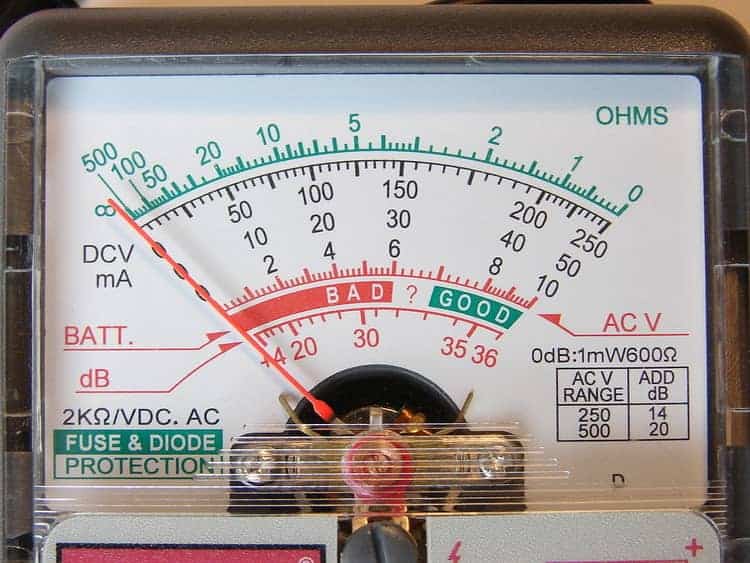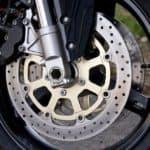We're an Affiliate. If you use our partner links we earn a commsission at no extra cost to you. Thank you for your support! Read the full disclosure here.
Nine times out of ten, we do not tend to worry about our car or motorcycle battery until it is completely and entirely out of juice. When this happens, we are forced to worry about it and to get it fixed, especially since it is considered as part of the maintenance for your vehicle.
It is a fact of life and dreaded task that everybody, even those who drive cars and motorcycles, must change their battery when the time is needed, but how will you know when it needs changed? Wouldn’t knowing how long your battery has left make driving less stressful and life much easier? Let’s talk about load testing a motorcycle battery and how to load test a motorcycle battery.
What is a load test?
A load test is simply to observe what percentage your battery is charged, and how much more of a charge it might need before it is fully charged. Although there are many knockoff ways to load test your battery, the one that is most advocated is either a temperature-compensated hydrometer, or a digital voltmeter with an accuracy of 0.5% or more.
The Pacific Power Batteries website advises against an analog voltmeter, as its accuracy is flawed. The temperature-compensated hydrometer is fairly inexpensive, but that all depends on your brand preference and where you look to purchase it.
You can find some as inexpensive as $25, whereas others might be purchased for much more. Its purpose is to test the specific gravity. The specific gravity of a battery is an accurate method for measuring the state of charge, because during a discharge, the specific gravity declines linear with ampere-hours discharged. The specific gravity rises as the battery is recharged.



The hydrometer is a tool that is used to measure the density and/or weight of liquid as opposed to the density of the same amount of water. A lead acid battery cell needs to be completely charged with a specific gravity of 1.265 at eighty degrees Fahrenheit.
Get a reading on the specific gravity for accurate temperature adjustments by adding .004 for every ten degrees above eighty, and subtract .004 for every ten degrees below eighty degrees Fahrenheit.
There are other ways to test your motorcycle battery as well. First and foremost, observe to see if whether your motorcycle is cranking slowly, or having difficulties starting up. Think about the sound a car makes when the engine won’t turn over. It sounds very similar to a motorcycle that cranks slow.
If it’s been having difficulties starting up, make sure to oversee any other potential problems your bike may or may not have, as this will save you the time and energy down the road. (Obtaining a load tester is optional, but is not a necessary tool to test a charge, or to recharge your bike battery.)



Once your motorcycle is properly inspected, it’s time to find the right tools or devices best for your motorcycle.
Here’s a list of the highest-rated devices that can and have been used for testing motorcycle batteries:
ANCEL BST 500 Pro 12V/24V Auto Load Battery Tester (Digital Analyzer Bad Cell Test Tool)
– Although this device is a little more on the expensive side, it has amazing ratings, and positive reviews on the quality and reliability.
AUTOOL Upgraded 12V Automative Battery Load Tester
– Definitely more wallet friendly, and rated as one of the most reliable devices used for battery testing.
How To Load Test A Motorcycle Battery
This next part is very simple and will take you through step by step instructions on how to load test a motorcycle battery.
- Let your motorcycle run for 2-3 minutes to receive an accurate surface charge
- Turn off completely before testing or charging
- Attach the positive (+) lead or terminal (red) into the red outlet
- Attach the negative (-) lead or terminal (black) into the black outlet
- Turn the dial to 12V
Attaching The Test Leads
- Take the negative (-) test lead or terminal (black) and attach it to the negative side of the battery
- Take the positive (+) test lead (red) and attach it to the positive side of the battery
Optimal Battery Charge for most bikes: 12.4 – 12.6
Second Load Test
- Place the positive (+) (red) lead or terminal into the red outlet
- Plug the negative (-) (black) lead or terminal right next to it into the black outlet
- Turn the dial up to 20V – most accurate for motorcycles is 20V
Attaching the test Leads
- Take the negative (-) test lead or terminal (black) and attach it to the negative side of the battery
- Take the positive (+) test lead or terminal (red) and attach it to the positive side of the battery
Commonly Asked Questions:
We found some commonly asked questions that may help some people new to dealing with a motorcycle battery. I know I had (and still have) questions when I have to mess with the battery on my Godlwing.
Which type of battery is most commonly used or recommended for a motorcycle?
– Lead acid batteries or VRLA (Valve Regulated Lead Acid) which include gel cell batteries, and AGM (Absorbed Glass Mat)
– Odyssey Battery
What are some load testers best to use for motorcycles?
Schumacher Electric Digital Battery Extender
– 3 Amp 6/12 volt, perfect for motorcycles and power sport batteries
– Price: $$
BikeMaster Battery Load Tester
– Two load settings: one for up to six amps. For 12V systems only.
– Price: $$
Power-Sports Battery and Electrical System Tester
– For 12V systems, Voltmeter mode for starter / alternator testing
– Price: $$$
How do you start a motorcycle with a dead battery?
– Whether you left your lights on, have an older model, or didn’t have proper storage, you’re more than likely to come across a dead battery at least once.
Make sure to check out the basics, like gas level, kill switch, etc.
The simplest of strategies to push start a motorcycle, is to sit on the bike and have 1-2 people push you.
Note: This option is not available if you are alone.
The Push Start Method
So you need to push start the motorcycle. It’s not fun, but here are a couple of methods to get you started.
With Two People
– Insert your key and turn on the ignition
– Put the bike into 2nd gear, which prevents the bike from jerking
– You need to get your motorcycle to go at a minimum of 5MPH to pull in the clutch while seated on the bike.
– Have your friends push
– Once you are up to speed, immediately drop the clutch
– Push the starter
– Once the engine is started, pull in the clutch
– Give it some gas. (This will ensure you keep up your RPMs.)



If You’re By Yourself
– Insert your key and turn on the ignition
– Put the bike into 2nd gear
– You need to get your motorcycle to go at a minimum of 5MPH to pull in the clutch while seated on the bike. (Locate a hill or small incline that you can SAFELY roll down to gain speed. Be sure to push from the left side until you get to jogging speed.)
– When you get up to speed, jump on the bike
– Immediately drop the clutch
– Push the starter
– Once the engine starts, pull in the clutch
– Give it some gas.
THE Jumpstart Method
According to CycleWorld.com, they state how simple it is to jumpstart your bike. This article points out that by simply removing the seats and/or side covers, you will have full access to the bikes’ batteries, making this process go smoothly.
– Attach the positive (+) terminal on the dead battery to the charged battery using the red cable ends.
– Attach the black cable end to the negative (-) terminal on the charged battery.
– Lastly, attach the remaining black cable end, either to the chassis, the engine, or the negative terminal on top of the dead battery.
– As soon as you start up the engine on your bike, remove the negative cable first.
– After removing the negative cable, continue to remove the positive cable
IMPORTANT: Make sure you don’t accidentally let any two cable ends touch each other.
Can you jumpstart a motorcycle with another motorcycle?
– Of course. The same method works for jumpstarting your motorcycle as you would jumpstart it using a car. All you need are cables and follow the above instructions using caution.
In conclusion, it’s pretty easy to test your motorcycle battery. The push method isn’t particularly fun, but all riders go through this ordeal at least once in their lives.
More Frequently Asked Questions
Q: What is the importance of load testing a motorcycle battery?
A: Load testing a motorcycle battery helps determine its capacity and overall health. It ensures that the battery can deliver the necessary power to start the engine and handle the electrical demands of the motorcycle.
Q: How can I test my motorcycle battery’s voltage?
A: You can test your motorcycle battery’s voltage using a multimeter. Set the multimeter to the DC voltage setting, connect the positive lead to the positive battery terminal and the negative lead to the negative battery terminal. The multimeter will display the battery’s voltage.
Q: What is a battery load tester and how does it work?
A: A battery load tester is a device used to apply a load to the battery while measuring its voltage. It simulates the battery’s performance under normal operating conditions and helps determine its capacity and ability to deliver power.
Q: How can I load test my motorcycle battery?
A: To load test your motorcycle battery, you will need a battery load testing device. Connect the load tester to the battery, following the manufacturer’s instructions. Apply a load to the battery and observe the voltage reading. If the voltage drops significantly, it may indicate a weak or defective battery.
Q: Can I use a voltmeter to test my motorcycle battery?
A: Yes, you can use a voltmeter to test the voltage of your motorcycle battery. However, a voltmeter will only provide a static voltage reading and may not give a complete picture of the battery’s health under load.
Q: What is a static test for a motorcycle battery?
A: A static test for a motorcycle battery involves measuring its voltage without applying a load. It gives a basic indication of the battery’s state of charge but may not reveal any underlying issues or its ability to deliver power under load.
Q: How can I recharge my motorcycle battery?
A: To recharge your motorcycle battery, you can use a battery charger specifically designed for motorcycle batteries. Connect the charger to the battery, following the manufacturer’s instructions, and allow it to charge until the battery is fully charged.
Q: What are the signs of a dead motorcycle battery?
A: Signs of a dead motorcycle battery include no power when trying to start the motorcycle, dim or flickering lights, or a clicking sound when attempting to start the engine.
Q: What is the importance of checking the charging system when testing a motorcycle battery?
A: Checking the charging system is important when testing a motorcycle battery because a faulty charging system can lead to battery issues. If the charging system is not operating properly, the battery may not be receiving adequate power and can become discharged or damaged.
Q: When should I replace my motorcycle battery?
A: You should consider replacing your motorcycle battery if it consistently fails load tests, does not hold a charge, or if it is several years old and showing signs of deterioration.
In the End…
Make sure that you get yourself a good trickle charger or battery maintainer. The devices plug into the wall and can be setup to plug into you motorcycle. This helps keep you battery fresh and ready when you don’t have the opportunity to ride as often as you’d like.






